Polar Ignite 3 : Is the Power Saver Settings Worth Using?
Power saver settings only applies to GPS tracking workouts. What this feature allows you to do is alternate between GPS recording rates to conserve battery life. Now I have already completed a GPS battery consumption test, and the Polar Ignite 3 performed exceptionally well and I have given the device a five star rating, check out my battery life test results.
In this article, I will be checking the GPS tracking accuracy when alternating between GPS recording rates, and also how much battery life do you actually save. I honestly think this test will provide some clarity, but here is a quick summary of my test results.
| GPS Recording Rates | Accuracy | Battery |
| Every Second | 5/5 | 2% |
| Every Minute | 0/5 | 1% |
| Every 2 minutes | 0/5 | 1% |
| Experimental test | 0/5 | 1% |
| Power Settings | ES | EM | E2M |
| GPSBC Per hour | 6% | 3% | 3% |
- GPSBC = GPS battery consumption
- ES = GPS recording rate set at every second
- EM = GPS recording rate set at every minute
- E2M = GPS recording rate set at every 2 minutes
After reflecting on the results, the default settings (Every second) passed with flying colours, how ever the every minute setting did not quite pass the GPS accuracy test with a final score of 0 out of 5, but you do conserve 50% battery life which I think is a win. I also discovered something in the every minute test, and I am going to share this with you in the article.
Is the power settings mode is worth using? the answer is yes. GPS recording rate set at every minute is a great alternative to use, but it does come with some conditions and I will explain this in detail in the experimental test I conducted.
Constructing a Test Scenario
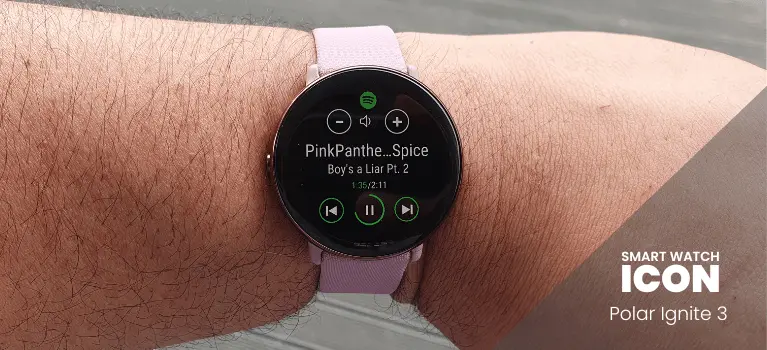
I think that this is important to mention as it’s important to plan some form of consistency when providing test results. This is how I would be conducting the test.
- Choose a location where there is zero obstructions, just so it’s easy to compare results.
- Choose a location of flat terrain and a series of higher elevations to test the devices multipath ability. This is to see if the device can still pin point your location due to changes in elevation (uphill and down hill)
How I will be Testing the Devices Accuracy
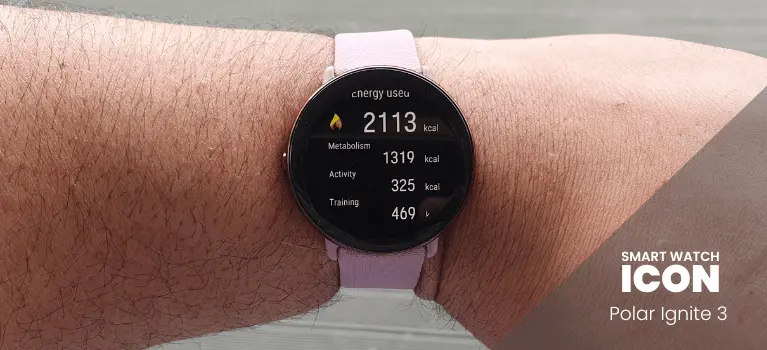
If you are new to my GPS tracking articles, I have my own testing system when checking the devices accuracy. It’s not the industry standard, but it is a system that I created myself based on my testing experience. It’s a fairly crude system, but effective enough to give a device a rating based on a system, rather than opinion.
- Zero mis alignment : Is where the device reading is exact or within 2 meters (10FT or less) variance.
- Minor mis alignment : Is where the device is reading with a slight error that’s greater than 2 meters (10 FT) and no more than 3.5 meters (11.5 FT)
- Major mis alignment : Is where the device is reading with a very large error that’s greater than 3.5m (11.5 FT)
GPS Accuracy Rating System
| No of Stars | Description | Comments |
| 5 | Zero mis alignments, no errors | Excellent precision, no errors, tracks correctly |
| 4 | Up to 3 minor mis alignments | Very good precision, some minor errors |
| 3 | 4 – 5 minor mis alignments | Average precision |
| 2 | 6 or more minor mis alignments | Below average precision |
| 1 | 1 Major mis alignment | Not good, |
| 0 | More than 1 major mis alignment | Way off |
GPS Recording, Every Second : 5 out of 5
When conducting my first test, I was expecting the Polar Ignite 3 to get a top score of 5 out of 5. Check out my article Polar Ignite 3 : GPS accuracy is very good, but it does have issues and you will see why I have high expectations for the Polar Ignite 3.
As the default GPS recording rate, the Polar Ignite 3 performed exceptionally well and gained a 5 out of 5 rating. Here is a summary of my final results for my first test.
| Criteria | Results |
| Obstructions | none |
| Minor | zero |
| Major | zero |
| Duration | 19 minutes |
| Battery Consumption | 2% |
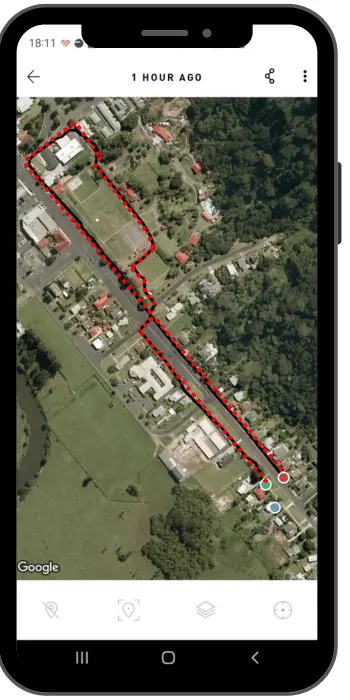
GPS Recording, Every Minute : 0 out of 5
Te be fair, I think the Polar Ignite 3 performed exceptionally well in this test. Although the 0 out of 5 rating does not reflect that, but there is some positive signs about this test.
Out of all the devices that I have tested in the past, devices that have a battery saving mode, GPS accuracy is normally way off. In regards to the Polar Ignite 3, that is not the case, and under careful review, it’s accuracy is very good.
In this test, the first 70% of this test is flat terrain and if I was to provide a rating based on the first 70%, the Polar Ignite 3 would get a 5 out of 5 rating, which is absolutely fantastic. Where the device failed is the change in elevation, which is something that I wanted to expose the device to.
I have provided an image of the last 30% of my planned route, and the change in elevations is very sharp because within a 60 second span the changes in elevation goes high then very low. Within that 60 second period the satellites would find it hard to pinpoint your location because, the satellites need more time to connect to the receiver (Polar Ignite 3). This is why I have chosen this planned route, here is a summary of my final results.
| Criteria | Results |
| Obstructions | none |
| Minor | zero |
| Major | 2 |
| Duration | 18 minutes |
| Battery Consumption | 1% |
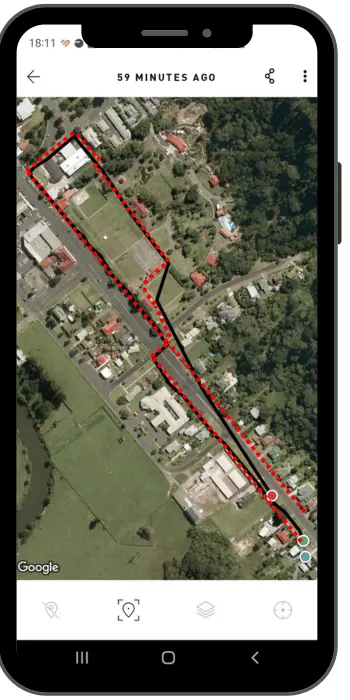
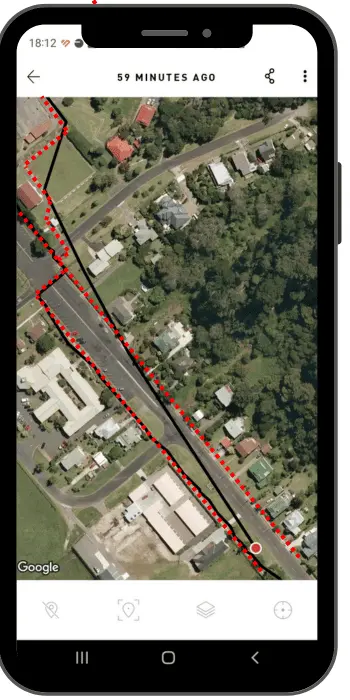
GPS Recording, Every Two Minutes : 0 out of 5
I was very surprised by the end result, and I was expecting the result to be way off, but it was far from it. The first 50% of the planned route, was flat terrain so I was surprised to see the Polar Ignite 3 tracked accurately.
In the far top left is where the first major mis alignment occurred, that area is flat terrain as well, so it maybe a delayed recording to pinpoint my location, which didn’t recover very well at all. If GPS accuracy is important to you, I wouldn’t use this battery saving mode. Here is a summary of my final results for this test.
| Criteria | Results |
| Obstructions | none |
| Minor | zero |
| Major | 1 |
| Duration | 20 minutes |
| Battery Consumption | 1% |
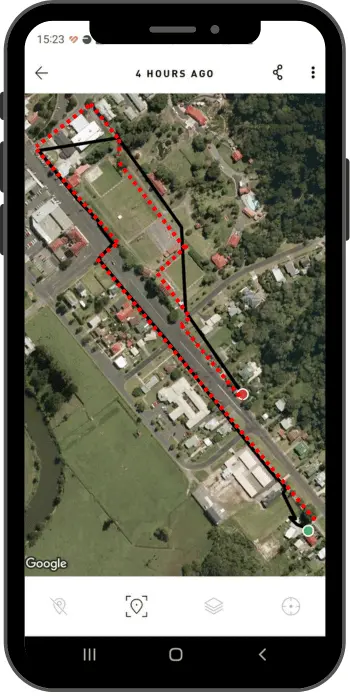
Experimental Test : 0 out of 5
I was really impressed with the accuracy when using GPS recording rate at every minute. Based on what I have learnt about the GPS recording rates, I wanted to do a experimental test to see if my analysis is correct. Here is how I will go about doing the experimental test.
- Plan my route on flatter terrain only (no elevation changes)
- Plan my route so there is very little turns.
- Plan my route where I can run in a straight line for long periods
After finishing the experimental test, my analysis wasn’t that far off. Although I given the test a 0 out of 5, the device tracked 90% true at a 100% accuracy. When I ended the workout, the device could not record the last minute of my tracking. You will see in the image I provided that the tracking ended early.
I think that if you want the best of both worlds (GPS accuracy and battery life), you would have to follow the three bullet points above. The only problem is, you will need to plan your route, which can be time consuming. Here is a summary of my final experimental results.
| Criteria | Results |
| GPS recording | every minute |
| Obstructions | none |
| Minor | zero |
| Major | 1 |
| Duration | 15 minutes |
| Battery Consumption | 0% |
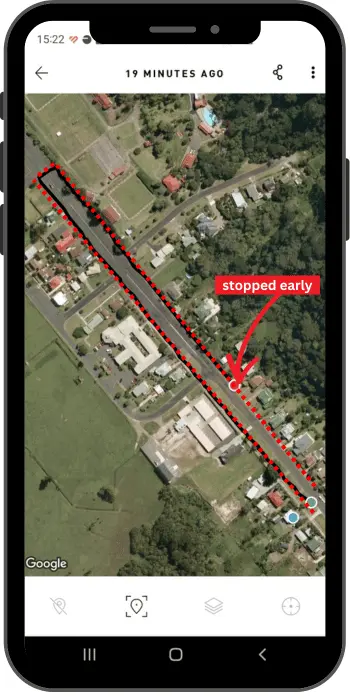
Final Conclusion
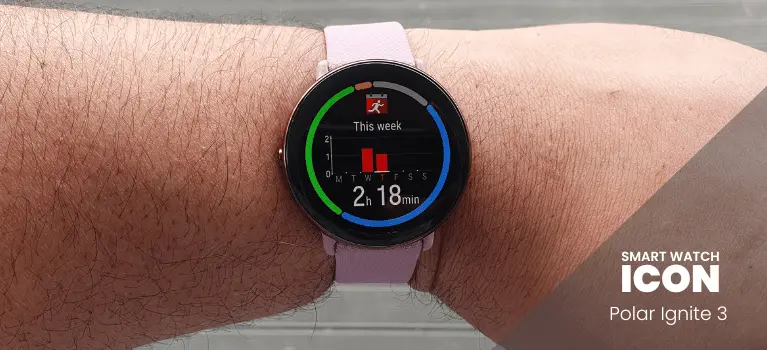
Thank you so much for reading and I hope you have learnt a lot about the battery saving mode for the Polar Ignite 3. My early predictions when conducting these tests is complete failure, and I have tested many devices that have a similar feature sacrifices the GPS accuracy to gain better battery life.
However the Polar Ignite 3 performed exceptionally well. Even though the final score does not reflect that, it did make me wonder if there is a possibility that this device can provide accuracy and prolonged battery life which is why I did the experimental test.
The better alternative GPS recording rate is every minute and if you follow my experimental test conditions you can get a fairly good result, but the only problem is planning your route can take some time if you really value accuracy. Thank you for reading.
